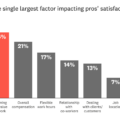Residential Trades Employment is Already 4% Higher than the Start of the Pandemic
Residential building jobs, which track closely with home service employment and act as part of the training pipeline for new home service workers, are now up 4% since the start of the Covid-19 pandemic. This is roughly double the growth rate of employment in the sector in 2019 and is yet another example showing a broader economic shift toward the home.
Residential building employment has fared relatively well over the course of the Covid-19 Pandemic. The worst month came during April of 2020 when year over year employment dropped by 13%, but even this was about the overall average for the economy as a whole, and it was barely half of the worst month during the 2007-2009 housing crash when in May 2009, annual employment growth dropped by 23% in a single month.
The stark differences for the construction trades is summarized well by the below chart, which shows the dramatically different monthly course for the building trades between the two recessions.

The period around and including the 2007-2009 great recession saw employment in the building trades industry shrink by nearly half, shedding close to half a million jobs. In contrast, employment in the sector is already higher than the start of the pandemic before the recession has even officially ended and labor shortages remain pronounced.
Not all sectors are nearly as fortunate. Professional and business services are still down 4% since the start of the pandemic, and despite a strong month in March for employment growth, leisure and hospitality is still down nearly 19%.

Even with a strong summer for spending on leisure and hospitality, it would take at least a year of non-stop growth at March’s impressive employment growth rate of 280,000 new leisure and hospitality jobs in order to make up for the nearly 4 million fewer jobs that currently exist in that sector relative to the rest of the economy.
The skilled trades and home service industry is filled with opportunities for satisfying careers in the trades. As we have noted before, while the skillsets between the leisure/hospitality and home services may not be immediately transferable, skilled trades employers are less concerned with pre-existing experience among potential recruits than they are with a positive attitude and a desire to work (for a full breakdown of the most desired attributes you can read our annual Skilled Trades in America Report).
The March jobs report is the latest example of illustrating the continued need to transition more workers into the skilled trades.







 Press & Media Inquiries
Press & Media Inquiries Angi Economics
Angi Economics